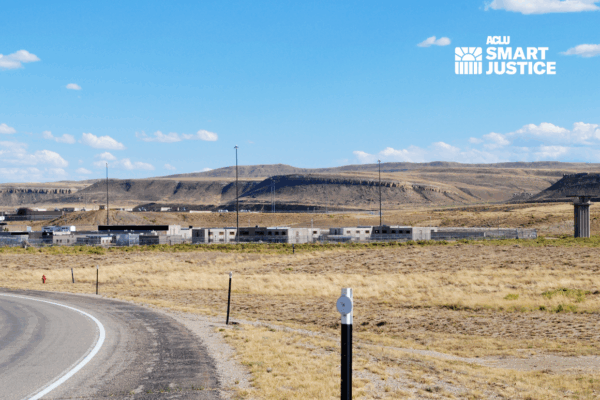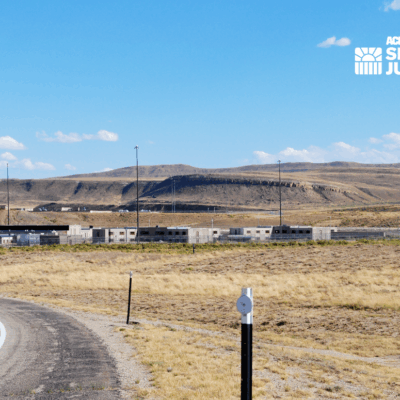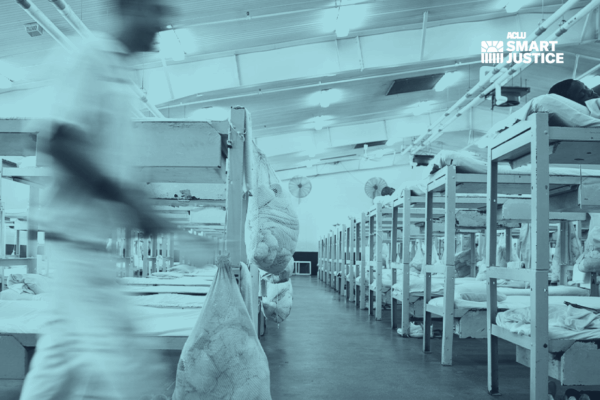Over the past five decades, the United States has dramatically increased its reliance on the criminal justice system as a way to respond to drug addiction, mental illness, poverty, and broken schools. As a result, the United States today incarcerates more people, both in absolute numbers and per capita, than any other nation in the world. Millions of lives have been upended and families torn apart. The mass incarceration crisis has transformed American society, damaged families and communities, and wasted trillions of taxpayer dollars.
We all want to live in safe and healthy communities, and our criminal justice policies should be focused on the most effective approaches to achieving that goal. But the current system has failed us. It’s time for the United States to dramatically reduce its reliance on incarceration and invest instead in alternatives to prison, including approaches better designed to break the cycle of crime and recidivism by helping people rebuild their lives.
The ACLU’s Campaign for Smart Justice is committed to transforming our nation’s criminal justice system and building a new vision of safety and justice. The Campaign is dedicated to cutting the nation’s incarcerated population in half and combating racial disparities in the criminal justice system.
To advance these goals, the Campaign partnered with the Urban Institute to conduct a two-year research project to analyze the kinds of changes needed to cut the number of people in prison in each state by half and reduce racial disparities in incarceration. In every state, Urban Institute researchers identified primary drivers of incarceration. They then predicted the impact of reducing prison admissions and length of stay on state prison populations, state budgets, and the racial disparity of those imprisoned.
The analysis was eye-opening.
In every state, we found that reducing the prison population by itself does little to diminish racial disparities in incarceration and in some cases would worsen them. In Wyoming — where the imprisonment rate of Black adults was nearly five times that of white adults in 2015 — reducing the number of people imprisoned will not on its own reduce racial disparities within the prison system. These findings confirm for the Campaign that urgent work remains for advocates, policymakers, and communities across the nation to focus on efforts like policing and prosecutorial reform that are specific to combating these disparities.
Wyoming’s prison population has increased dramatically in recent decades, nearly quintupling in size between 1980 and 2017. Its growth stands in contrast to more recent declines nationwide: Between 2012 and 2017, the number of people in state prisons across the country dropped by 3 percent, but in Wyoming that number grew by 12 percent. As of December 2018, there were 2,493 people imprisoned under the state’s jurisdiction. The imprisoned population has become so large, in fact, that the state is no longer able to house all of the people who have been sentenced to prison terms. As of December 2018, Wyoming was paying a private contractor to house 90 people in Mississippi.
Drug offenses are a particularly significant driver of Wyoming’s prison population. In 2015, they accounted for almost three in 10 prison admissions in the state.
In 2017, there were 1,047 admissions to state prisons, a number that was 28 percent higher than the number of admissions in 2009. An increasing number of prison admissions in Wyoming are due to revocations from supervision, such as parole and probation. In 2017, more than half of all admissions to state prisons were due to such revocations.
A growing portion of the Wyoming prison population is serving longer sentences. Between 2006 and 2015, the proportion of people in Wyoming prisons who had sentences of 10 years or longer rose from 39 percent to nearly half (47 percent). Harsh sentencing laws play a role in these long sentences — several recent reforms have increased penalties, including for lower-level crimes.
Unsurprisingly, Wyoming’s mass incarceration crisis has had a disproportionate impact on the state’s communities of color. Black adult Wyomingites accounted for 5 percent of the state’s prison population in 2015, despite making up only 1 percent of the overall state adult population that year.11 Also in 2015, the imprisonment rate of Native American adults was more than three times that of white adults in the state.
All this incarceration is expensive. In 2017, Wyoming spent $124 million of its general fund on corrections, accounting for 8 percent of its general fund spending that year. Spending on corrections more than quadrupled between 1986 and 2017, increasing by 327 percent, while higher education spending increased by merely 31 percent during that same period.
So, what’s the path forward?
Offering alternatives to incarceration such as substance use treatment, mental health care, employment, housing, health care, and vocational training could reduce recidivism and ensure that people don’t wind up in prison when they need other forms of intervention. The Wyoming Restorative Justice Council has been advocating for a restorative justice model for juveniles in the state, providing opportunities for victims and people who commit crimes to communicate — the Legislature should invest in and expand such programs as an alternative to incarceration in the wider criminal justice system as well.
Expanding probation as the presumptive punishment for certain offenses would also keep people from entering the system unnecessarily, as would ensuring that probation does not become a pipeline into prison. Enacting pretrial justice reform by reducing reliance on cash bail and creating a fairer, smarter pretrial system would also help.
Expanding the availability of earned credits against a prison sentence through behavior and participation in educational, vocational, and other opportunities could help keep prison populations down. So would extending compassionate release to people above the age of 50, when statistically they are less likely to commit further offenses.
For more detailed information about these and other potential reforms, see the sections on “Reducing Admissions” and “Reducing Time Served.” If Wyoming were to adopt the changes we detail in this report, the state could have 1,528 fewer people in prison by 2025, leading to a cost savings of over $150 million.
Ultimately, the answer is up to Wyoming’s voters, policymakers, communities, and criminal justice advocates as they move forward with the urgent work of ending the state’s obsession with mass incarceration.




